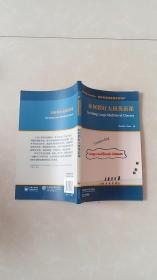
如何教好大班英语课:英文
全新正版 现货速发
¥ 13 4.7折 ¥ 27.9 全新
库存8件
江苏无锡
认证卖家担保交易快速发货售后保障
作者(美)赫斯
出版社外语教学与研究出版社
ISBN9787560088587
出版时间2009-10
装帧平装
开本16开
定价27.9元
货号11257049
上书时间2024-11-13
- 在售商品 暂无
- 平均发货时间 9小时
- 好评率 暂无
- 最新上架
商品详情
- 品相描述:全新
- 商品描述
-
目录
Thanks and acknowledgements
Introduction
How to make best use of this book
What is a large multilevel class?
Benefits and challenges of the large multilevel class
Eleven principles of coping in large multilevel classes
1 Getting to know our students
Learning their names
1.1 Name toss
1.2 Picture it
1.3 Names as crosswords
1.4 The story of my name
1.5 Names and adjectives
1.6 I am and I love
1.7 Desk placards
1.8 Use real pictures
Learning about our students lives
1.9 The letter
1.10 Guess who?
1.11 Three things about me
1.12 Mutual interviews
1.13 The missing person announcement
1.14 Managing my time
1.15 Formal introductions
2 Motivation and activation
2.1 Burst the balloon- expressing opinions
2.2 The preference line - explaining yourself
2.3 The quick-write
2.4 Like, dislike, or neutral
2.5 Whats your number?
2.6 Again and again and again
2.7 Friendship
2.8 More about friendship
2.9 People I admire
2.10 Spe places
2.11 Dreams I have
2.12 How I feel now
2.13 Slip exchange
2.14 Flip-flop books
2.15 Frame it
2.16 Colored round robin
2.17 Circle talk
2.18 Teaming up
2.19 Needle in a haystack
2.20 Optimistic snapshots
2.21 Words on cards
2.22 A solution for the problem
2.23 Student-centered dictation
2.24 The seminar
3 Reviewing while maintaining interest and momentum
3.1 Answers into questions
3.2 Review posters
3.3 Student-made quickie quizzes
3.4 Group reviews
3.5 Group summaries
3.6 Vocabulary wall
3.7 Class goals
3.8 The KWL procedure
3.9 The Venn diagram
3.10 Judging people
3.11 Running dictation
3.12 My sentence
3.13 Where is my other half?
3.14 Person, place or thing
4 Dealing with written work
4.1 Keep it going
4.2 Peer reviews
4.3 Writing conferences
4.4 Write before you talk
4.5 Buddy journals
4.6 Using email
……
5 Working well in groups
6 Individualizing and personalizing student work
7 Making students responsible for their own learning
8 Establishing routines and procedures
Bibliograpby
Index
内容摘要
针对大班英语课教学,本书介绍了150余个生动、有趣的课堂活动。每个活动都清晰标明了活动目的、适合水平及活动时间。除逐条详列操作步骤外,还提供活动涉及的范例、表格、图片样本供参考。书中活动均来自作者亲身教学实践,操作简便、实用性强,颇具启发性。
本书文字浅显易懂,编排一目了然,特别适合从事一线教学工作的中学、大学及培训学校英语教师使用,经验丰富的老教师也可从中获益。
相关推荐
— 没有更多了 —























以下为对购买帮助不大的评价